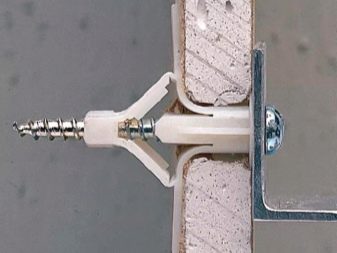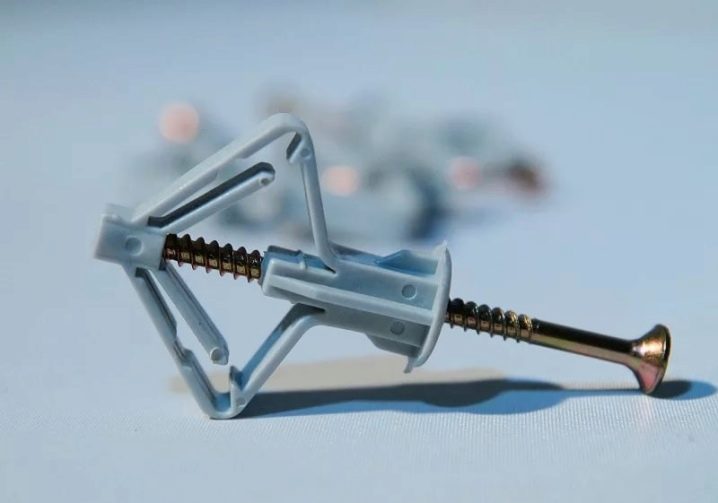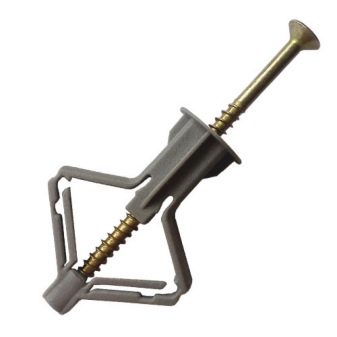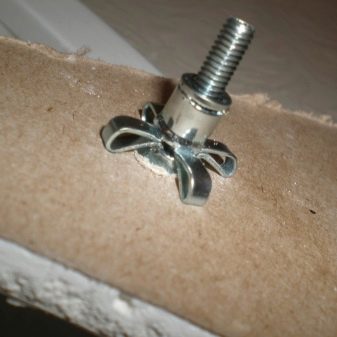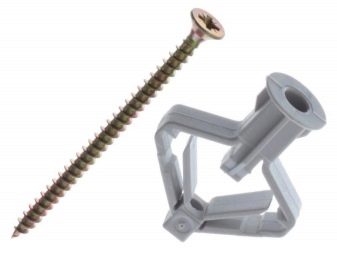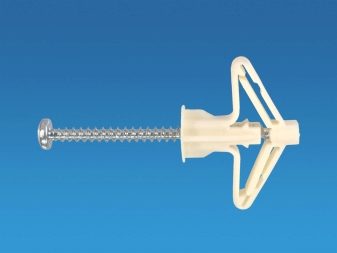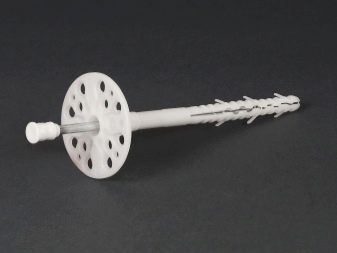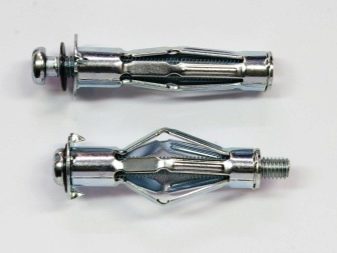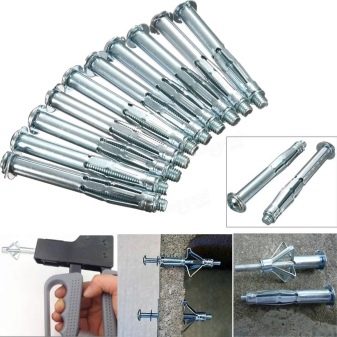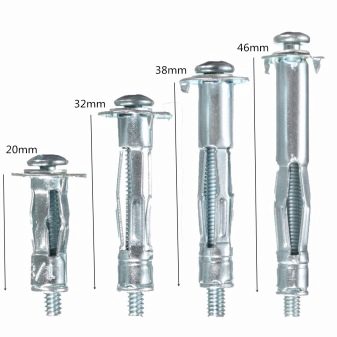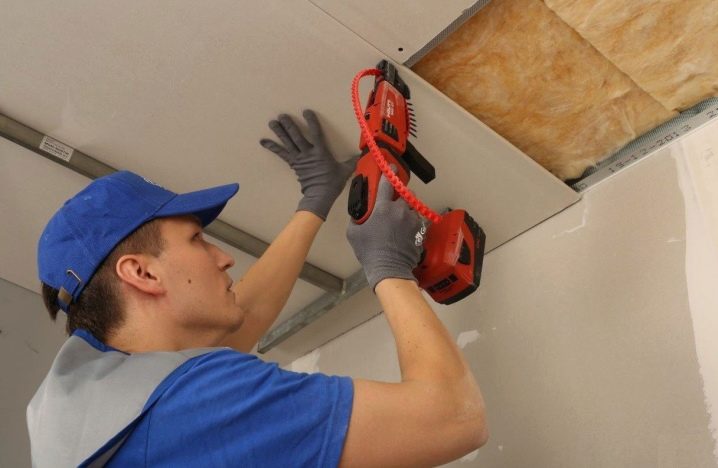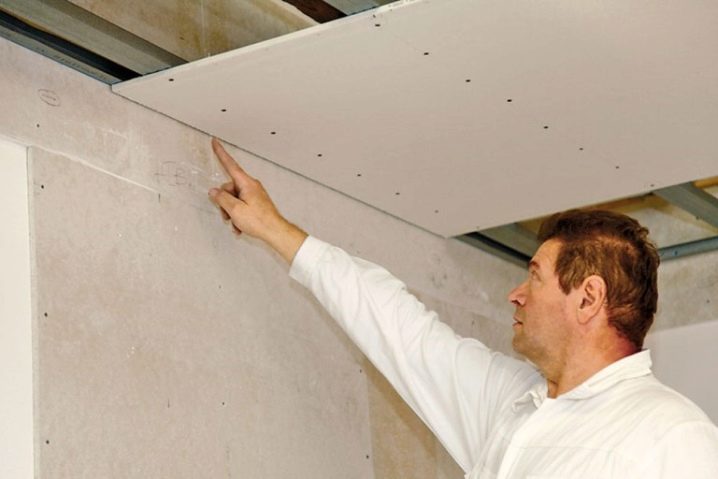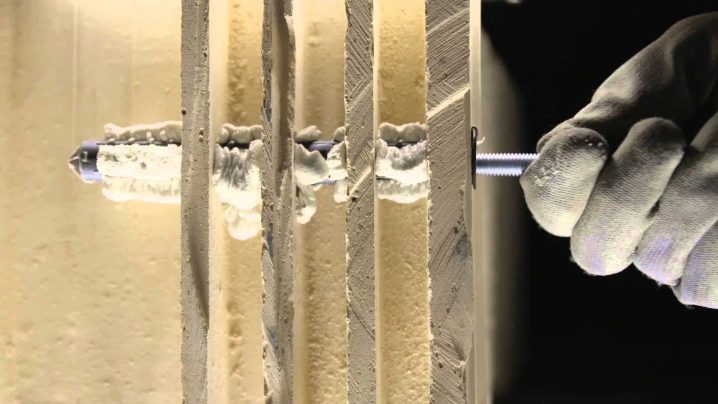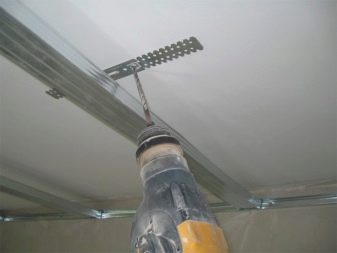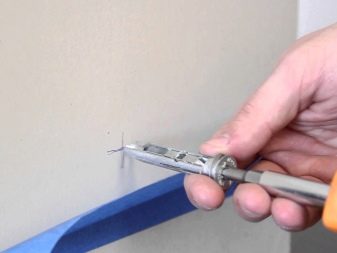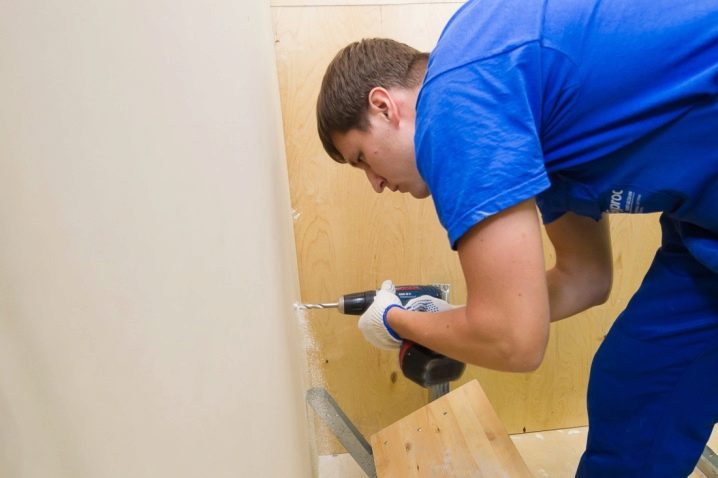Plasterboard dowel: features of choice
Drywall is a popular material for master finishers, which can be used for different rooms and different needs. It is used for leveling walls, creating various designs and many other purposes. Plasterboard walls are very different from concrete or brick walls. Therefore, for such hollow structures invented special dowels that can withstand the weight of heavy objects. Most often, for attachment to a plasterboard basis, they use the so-called dowel-butterfly, which is considered the most suitable type of fittings for such walls.
Special features
The dowel-butterfly is a type of construction fastener designed to securely fix such interior and everyday objects as shelves, paintings, chandeliers and lamps, televisions, various types of plumbing fixtures to the plasterboard wall.It has a wide bidirectional design and consists of spacer and static parts. The expansion part is placed in the hole made in the plasterboard construction, at the time of screwing in the threaded fastener, its expansion occurs, making the joint and becoming strong. The dowel has a rim that does not allow it to fall into the depth of the plasterboard construction.
The dowel-butterfly for drywall boasts an impressive set of advantages over other types of fasteners:
- Often goes on sale complete with screws, suitable for him in the parameters;
- convenience and ease of installation work;
- it can be applied to fixture of one or several sheets of gypsum cardboard;
- reliably fixed in drywall due to ribbed surface;
- uniform distribution of the load, which has an object attached to a sheet of drywall;
- The thread applied to the distal head of the dowel helps to secure the clamp, and special paws located inside ensure good durability of the whole structure and exclude turning under the condition that the dowel is fully screwed in;
- can be used repeatedly, while its repeated use has absolutely no effect on the quality of work;
- long service life;
- versatility, which makes it possible to use it for chipboard (chipboard), plywood and many other building sheet materials.
Kinds
Dowels can be divided into subspecies.
- Passable. They are used for fixing on the ceiling. They are ideal for installing massive chandeliers or sports equipment.
- Loosening. Used for hanging household items and the interior is not heavier than 15 kg.
Dowel butterflies are made of different materials. In particular, they can be plastic, metal and nylon.
The most common plastic butterflies. Their appearance, they are obliged to the invention of Arthur Fisher in 1958. Plastic plastic dowel has a low cost, thanks to which they have become popular with consumers. In turn, plastic and nylon plugs are not affected by rust. Their disadvantage is that it is undesirable to hang heavy objects on them.
Metal dowel butterfly at a price significantly higher than their plastic counterparts, but they also withstand a much greater load: up to several hundred kg. The ability to hold a lot of weight increases with the use of double drywall. Some manufacturers cover them with a special “anti-rust” compound, which prolongs the life of the fastener. The metal butterfly is also called the "molly" dowel. They have the following characteristics: self-tightening fasteners, L-shaped ledge design, ring dowels, hook shaped projections.
It can also be used to work with plasterboard. anchor bolt. An anchor wedge with lateral wedging is best for this material. The peculiarity of its structure is also in the fact that it is made of a metal stud with a groove under the wedge and thickening at the end. After installation, the anchor wedge cannot be dismantled.
For installation work, the purpose of which is to fix the metal profiles, chandeliers, shelves to drywall, is very often used dowel nail. Such fasteners can be of different sizes. For drywall is mainly used dowel-nail size 6x40 mm.
How to install
Drywall is known as a finishing material with not the highest strength. In the process, it can crack, break and crumble. But since it is easy to assemble, builders love to use it in their work. In order not to subject the plasterboard wall to mechanical destruction, the dowel-butterfly was created. With it, the installation of drywall can produce not only experts with experience, but also beginners.
Most often, such fasteners are used when you need to hang a shelf or a heavy picture on a plasterboard wall. Having firmly secured itself in the wall, the dowel-butterfly can withstand a structure weighing up to 10 kg. Provided that the wall is made of two layers of plasterboard, it is possible to hang an object up to 25 kg on it.
It is very easy to screw the dowel butterfly into drywall. This is done, as a rule, in a couple of minutes. Wherein To carry out quality work you need to adhere to some rules:
- First you need to determine the place of attachment, assess the complexity of the work and select the desired type of dowel-butterflies. You should not be surprised that the screws or screws in the kit may not be - they will need to be purchased separately.
- Usually dowels are bought with a small margin. Their versatility lies in the fact that you can fix the dowel butterflies not only on drywall, but also on many other materials.
- To make a markup, on which the dowels will be installed later, it is best to use a construction level. This will help to avoid mistakes in the work.
- Drywall drilling must be done with a drill. For punching, you can use a drill for wood. Drilling will be more convenient with a screwdriver.
- Before starting to drill, make sure that the screwdriver is working with the impact mode turned off.
- The hole in size must be such that a plastic dowel is inserted into it. Usually it is made 4 mm longer than it, since it should expand a little when the screw comes into it.
- The fastening element is put on the screw, on which the necessary object is then suspended.
- The dowel is clamped with fingers and threaded into the hole drilled in advance, before the cap fastener. Then you should tighten the screw.
- The self-tapping screw is required to be twisted to persistent fixing. Only in this way the components of the dowel expand to the maximum and are securely fixed onplasterboard wall. At the same time engaging in the installation of a screwdriver significantly reduces the likelihood of a thread breaking in plastic.
- Then with a little effort you need to pull the external fasteners. In this way, you can check the fixing strength.
Tips
The choice of fasteners for drywall should be based on the constant load that it can withstand. In addition, we must not forget that some types of fasteners can not be unscrewed without destroying the existing structure, therefore, it is necessary to clearly and accurately mark.
It should be noted that the dowel butterflies are made in different sizes, but the most popular are 9x13 mm and 10x50 mm. It should be remembered that in order to fully open the dowel-butterflies you need to take a self-tapping screw with a length of no more than 55 mm. In addition, craftsmen are advised to take into account the distance between the drywall and the wall.
The thickness of the fixed product with a butterfly is limited. As a rule, it is possible for them to attach to a wall a fastener with a thickness of no more than 5 mm, on which the piece of furniture will hold.
Sometimes it happens that the length of the dowel butterflies and screws are greater than the space behind the gypsum board.In this case, a drill is drilled a recess in the wall, which allows you to fully install fasteners.
When drilling on the ceiling it is recommended to use a disposable cup, which is put on the drill. This small trick will allow you to avoid cleaning the room from debris that will fall in the process.
Experts advise the material from which the dowels are made, check for elasticity. A fastener made of too hard plastic is more prone to fractures than others, so it can break immediately when fastened.
About the features of the choice of dowel butterfly for drywall, see the following video.

